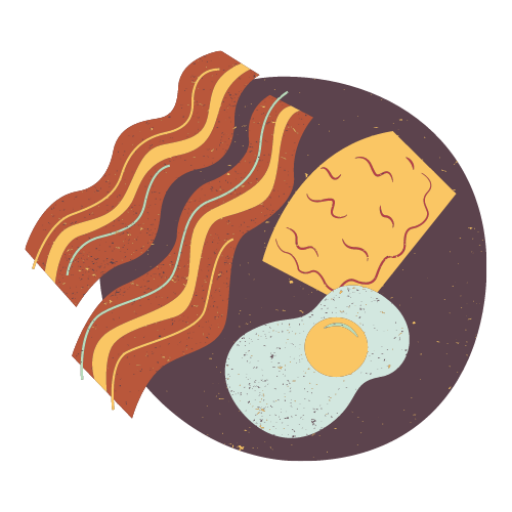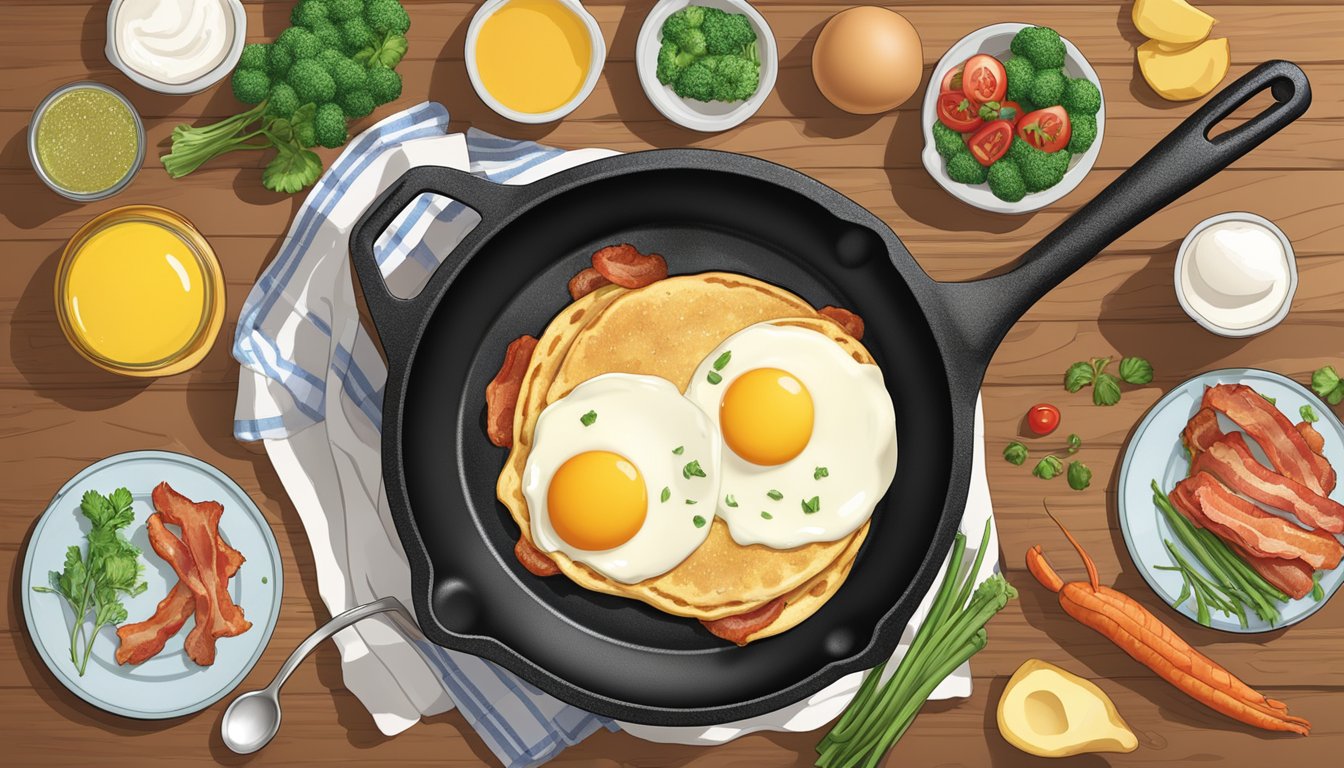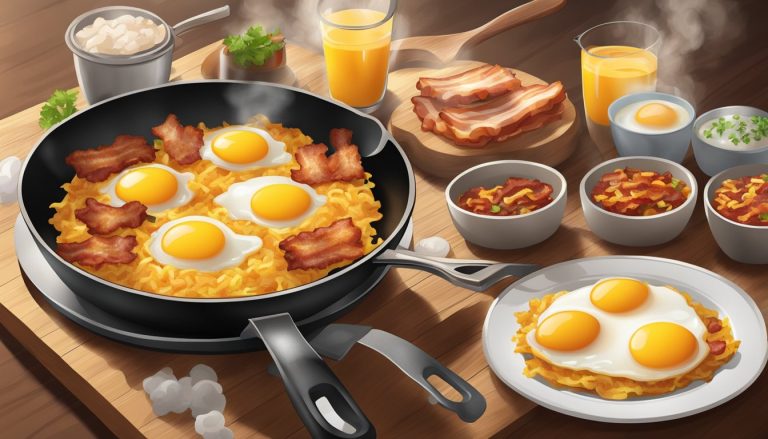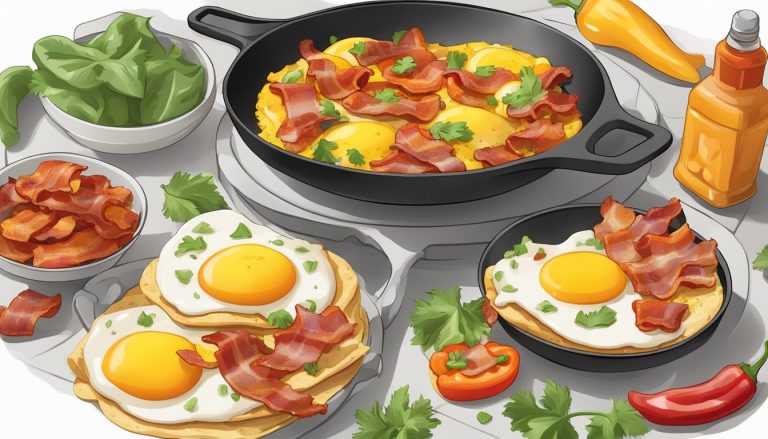Cast iron skillets are versatile kitchen tools that excel at creating delicious breakfast dishes. These durable pans distribute heat evenly, resulting in perfectly cooked meals with a delightful crispy texture. From savory egg dishes to sweet breakfast treats, cast iron skillets offer endless possibilities for morning cuisine.
Cast iron skillet breakfast recipes combine convenience with flavor, allowing home cooks to create restaurant-quality meals in their own kitchens. These recipes often feature a mix of proteins, vegetables, and starches, all cooked together in a single pan for easy preparation and cleanup. Whether you’re cooking for a crowd or preparing a hearty meal for one, cast iron skillet breakfasts are sure to satisfy.
1) Buttermilk Pancakes

Cast iron skillets are ideal for creating perfectly golden buttermilk pancakes with crisp edges and fluffy centers. The even heat distribution ensures consistent cooking across the entire pancake surface.
To make these classic breakfast treats, start by whisking together flour, sugar, baking powder, baking soda, and salt in a large bowl. In a separate container, combine buttermilk, eggs, melted butter, and vanilla extract.
Pour the wet ingredients into the dry mixture and gently fold until just combined. Overmixing can lead to tough pancakes, so a few small lumps are acceptable.
Preheat the cast iron skillet over medium heat. Once hot, lightly grease the surface with butter or oil. Pour batter onto the skillet, using about 1/4 cup per pancake.
Cook until bubbles form on the surface and the edges begin to look dry. Flip and cook for an additional 1-2 minutes on the other side. The result is a stack of golden-brown pancakes with a tender, tangy interior.
Serve immediately with butter, maple syrup, or fresh fruit for a delightful breakfast experience that showcases the versatility of cast iron cooking.
2) Shakshuka
Shakshuka is a flavorful Middle Eastern dish that perfectly showcases the versatility of a cast iron skillet. This one-pan wonder combines eggs poached in a rich tomato sauce with aromatic spices.
To prepare shakshuka, start by sautéing onions and bell peppers in olive oil until softened. Add minced garlic and a blend of spices like paprika, cumin, and chili powder for depth of flavor.
Next, pour in diced tomatoes and simmer the sauce until it thickens. Create small wells in the sauce and crack eggs directly into them. Transfer the skillet to a preheated oven and bake until the egg whites are set but the yolks remain runny.
Serve the shakshuka straight from the skillet, garnished with fresh herbs like parsley or cilantro. The cast iron retains heat well, keeping the dish warm throughout the meal.
This hearty breakfast option pairs wonderfully with crusty bread for dipping. It’s a nutritious and satisfying way to start the day, offering a balance of protein, vegetables, and complex flavors.
3) Breakfast Hash with Sweet Potato
Sweet potato breakfast hash is a nutritious and flavorful way to start your day using a cast iron skillet. This versatile dish combines the natural sweetness of sweet potatoes with savory ingredients for a satisfying meal.
Begin by cooking diced bacon in the skillet until crispy. Remove the bacon and set aside, leaving the fat in the pan. Add diced sweet potatoes to the skillet in an even layer, cooking for 12-15 minutes until fork-tender.
For added flavor and nutrition, include diced bell peppers and onions. These vegetables complement the sweet potatoes and add texture to the hash. Stir the mixture occasionally to ensure even cooking.
Consider incorporating protein by adding cooked sausage or creating wells in the hash for eggs. For a vegetarian option, sautéed mushrooms make an excellent addition. Leafy greens like kale can be stirred in during the final minutes of cooking.
Season the hash with salt, pepper, and herbs of choice. Garlic powder, paprika, or rosemary work well with sweet potatoes. Serve the hash hot, directly from the skillet for a rustic presentation.
4) Crispy Bacon and Eggs
A cast iron skillet is perfect for achieving the ideal crispy bacon and perfectly cooked eggs. Start by heating the skillet over medium heat on the stovetop.
Place bacon strips in the cold skillet and cook until they reach desired crispiness, usually about 5-7 minutes per side. Remove the bacon and set aside on paper towels to drain excess grease.
Leave about 2 tablespoons of bacon fat in the skillet. Crack eggs directly into the hot pan, allowing them to sizzle in the flavorful drippings.
Cook the eggs to your preference. For sunny-side up, cover the skillet and cook for 2-3 minutes. For over-easy, flip after 2 minutes and cook for an additional 30 seconds.
Serve the crispy bacon alongside the eggs. The cast iron skillet’s heat retention ensures the food stays warm while serving.
This simple yet satisfying breakfast combines the smoky flavor of bacon with perfectly cooked eggs, all thanks to the versatility of a cast iron skillet.
5) Skillet French Toast
Cast iron skillets are ideal for creating perfect French toast. The even heat distribution ensures a golden-brown exterior while maintaining a soft, custardy interior.
To make skillet French toast, start by whisking together eggs, milk, cinnamon, and vanilla in a shallow bowl. Dip thick slices of bread into the mixture, coating both sides evenly.
Melt butter in a preheated cast iron skillet over medium heat. Place the coated bread slices in the skillet and cook for 2-3 minutes on each side until golden brown.
For added flavor, consider using brioche or challah bread. These rich, slightly sweet breads absorb the egg mixture well and develop a delightful caramelized crust when cooked.
Serve the French toast hot from the skillet with your favorite toppings. Classic options include maple syrup, fresh berries, or a dusting of powdered sugar.
For a twist on the traditional recipe, try baking the French toast in the skillet. Arrange the soaked bread slices in the skillet, then bake in a preheated oven until puffed and golden.
Benefits of Using a Cast Iron Skillet
Cast iron skillets offer unique advantages that make them ideal for breakfast cooking. These durable pans enhance flavor and provide consistent results across various recipes.
Heat Retention and Distribution
Cast iron skillets excel at retaining and distributing heat evenly. This property ensures food cooks uniformly, eliminating hot spots that can lead to uneven cooking. The pan’s ability to maintain temperature is particularly useful for dishes that require consistent heat, such as eggs or pancakes.
Cast iron also retains heat well after being removed from the stove. This characteristic keeps food warm longer, perfect for serving breakfast dishes that might sit for a few minutes before eating. The material’s heat retention can help achieve a crispy exterior on foods like hash browns or bacon while maintaining moisture inside.
Versatility in Cooking Techniques
Cast iron skillets are incredibly versatile, accommodating various cooking methods. They can go from stovetop to oven seamlessly, allowing for techniques like searing and baking in a single pan. This versatility is ideal for breakfast dishes that require multiple cooking steps.
These skillets work well for frying, sautéing, and even baking. They’re perfect for creating crispy edges on fried eggs or achieving a golden-brown crust on frittatas. Cast iron’s ability to withstand high temperatures makes it suitable for recipes that call for broiling, such as toasting cheese on top of a breakfast casserole.
The naturally non-stick surface that develops over time with proper seasoning reduces the need for excessive oils or fats in cooking. This feature can contribute to healthier breakfast preparations while still delivering excellent flavor and texture.
Maintenance and Care for Your Skillet

Proper care ensures your cast iron skillet lasts for generations. Regular seasoning and correct cleaning methods protect the cooking surface and enhance its non-stick properties.
Seasoning Your Cast Iron
Seasoning creates a protective layer on your skillet’s surface. Start by cleaning the skillet thoroughly and drying it completely. Apply a thin coat of vegetable oil or flaxseed oil all over the skillet, including the bottom and handle. Preheat your oven to 450°F (230°C) and place the skillet upside down on the oven rack. Bake for 1 hour, then let it cool in the oven.
Repeat this process 3-4 times for optimal results. With regular use and proper care, your skillet will develop a smooth, black patina. Re-season as needed, especially if you notice food sticking or the surface looking dull.
Cleaning and Storage Tips
Clean your skillet while it’s still warm, but not hot. Use hot water and a stiff brush or scraper to remove food particles. Avoid soap, as it can strip the seasoning. For stubborn bits, simmer water in the skillet for a few minutes, then scrape gently.
Dry the skillet immediately with a clean cloth or paper towel. Heat it briefly on the stove to evaporate any remaining moisture. Apply a light coat of oil before storing to prevent rust.
Store your skillet in a dry place. If stacking, place a paper towel between skillets to protect the surfaces. For long-term storage, consider using a silica gel packet to absorb moisture.




